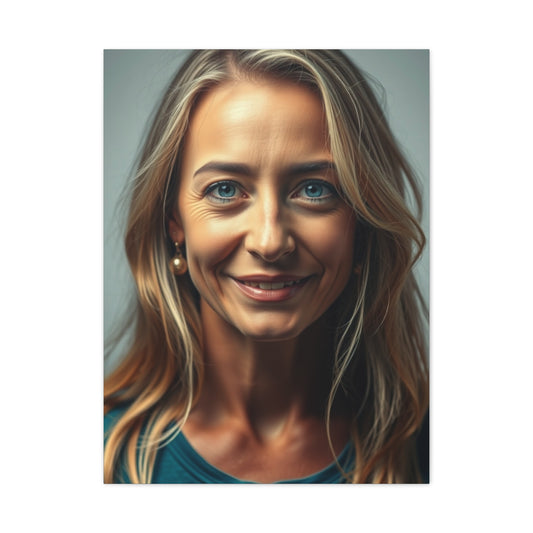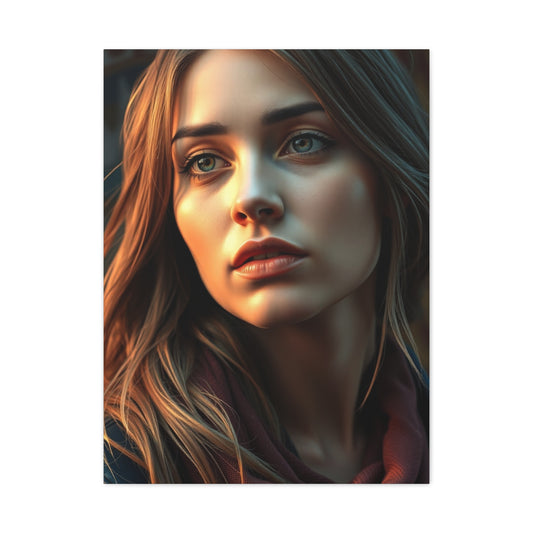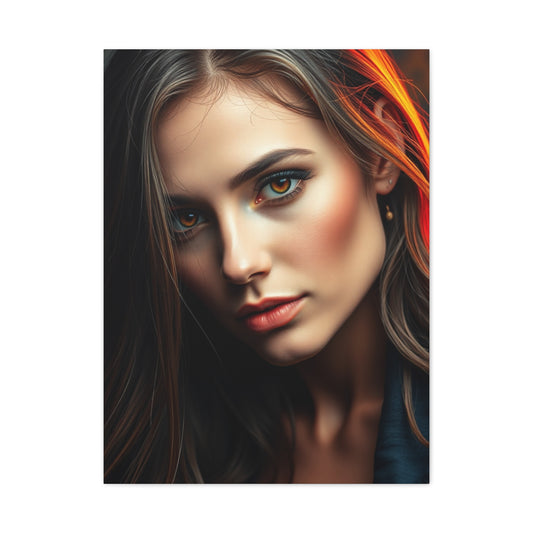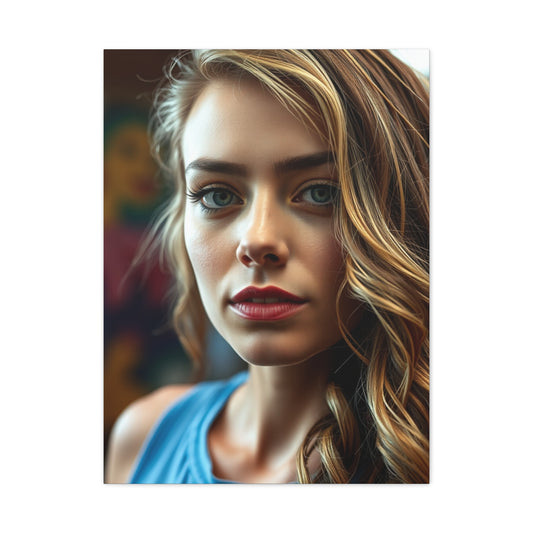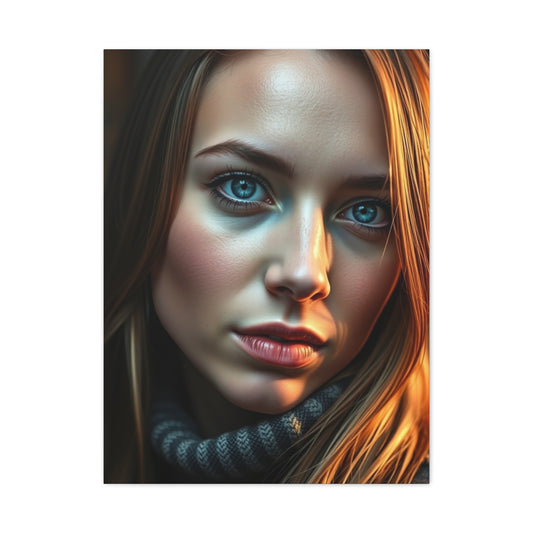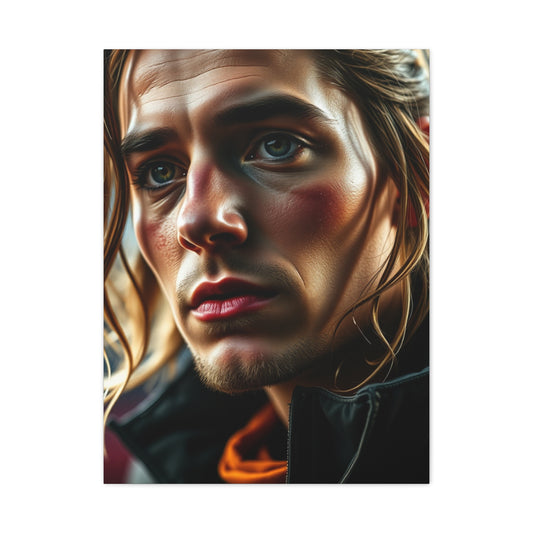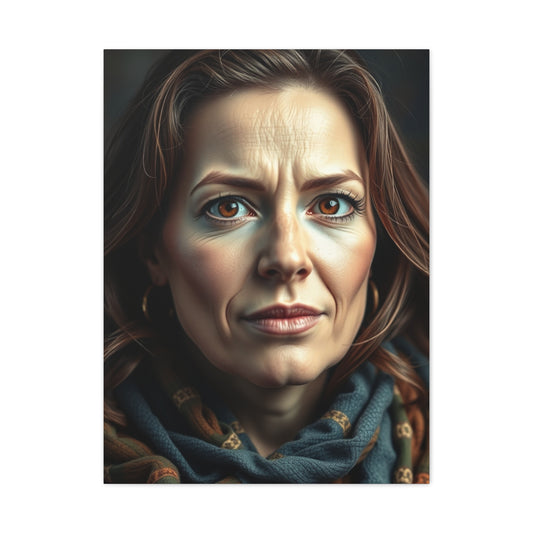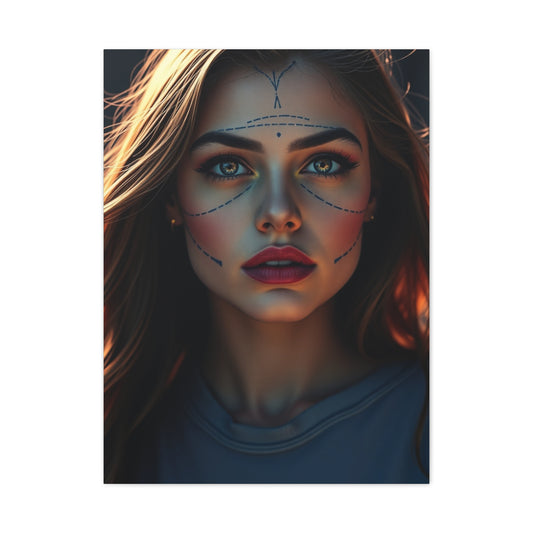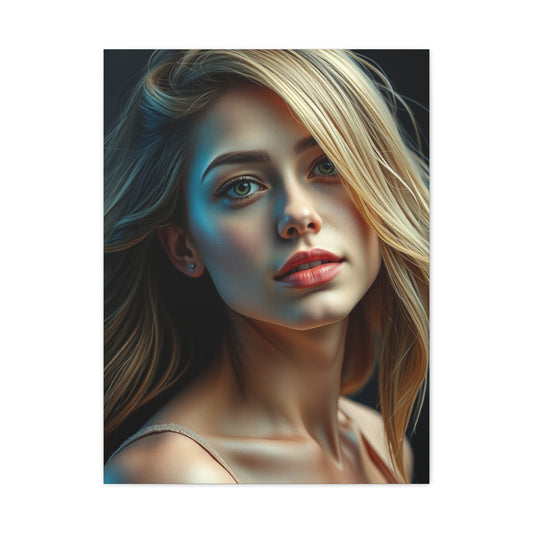Transform Living Spaces with Jess Loiterton Ocean Wall Art and Coastal Flair
The mesmerizing realm of maritime artistry has found its most compelling voice through the extraordinary vision of Jess Loiterton, whose oceanic creations have revolutionized contemporary interior design. This comprehensive exploration delves into the captivating universe of coastal-inspired wall décor that has transformed countless spaces across the globe. From intimate residential settings to expansive commercial environments, these remarkable pieces continue to redefine how we perceive and integrate natural beauty within our living spaces.
The allure of ocean-themed wall décor extends far beyond mere aesthetic appeal, encompassing emotional resonance, spiritual connection, and the profound human need to maintain ties with the natural world. Each carefully crafted piece serves as a portal to the vast expanses of azure waters, where tranquility meets dynamism in perfect harmony. The artist's distinctive approach captures not merely the visual splendor of marine environments but also their essence, their rhythm, and their eternal dance between serenity and power.
Contemporary interior design increasingly embraces the therapeutic qualities inherent in nature-inspired artistry. The psychological benefits of incorporating oceanic elements into living spaces have been extensively documented, with research indicating significant improvements in stress reduction, mental clarity, and overall wellbeing. These stunning visual representations serve as daily reminders of nature's grandeur, offering moments of peaceful contemplation amidst the chaos of modern life.
The versatility of maritime wall décor allows for seamless integration across diverse architectural styles and design philosophies. Whether adorning the walls of minimalist Scandinavian interiors, complementing rustic coastal cottages, or enhancing sophisticated urban lofts, these pieces demonstrate remarkable adaptability while maintaining their distinctive character. The careful balance of color, composition, and emotional depth ensures that each installation becomes a focal point that enhances rather than overwhelms the surrounding environment.
Exploring the Diverse Canvas Print Collection
The canvas print collection represents the pinnacle of oceanic artistry, showcasing the magnificent interplay between technical excellence and creative vision. These extraordinary pieces undergo meticulous production processes that preserve every nuance of the original compositions while ensuring longevity and visual impact. The selection of premium materials, from high-grade canvas to archival inks, guarantees that each print maintains its vibrancy and clarity for decades to come.
Canvas prints offer unique advantages in terms of texture, depth, and visual presence that distinguish them from traditional photographic prints. The fabric surface creates subtle variations in light reflection, adding dimensionality and richness to the imagery that changes throughout the day as natural light shifts across the space. This dynamic quality ensures that the artwork remains engaging and alive, offering new discoveries with each viewing.
The production process involves state-of-the-art printing techniques that capture the finest details of oceanic scenes, from the delicate foam patterns atop cresting waves to the subtle color gradations that occur where sea meets sky. Advanced color management systems ensure faithful reproduction of the artist's original vision, while specialized coating processes provide protection against fading, moisture, and environmental factors that could compromise the artwork's integrity.
Size considerations play a crucial role in maximizing the impact of canvas prints within different spatial contexts. Large-format pieces create dramatic focal points that can transform entire rooms, while smaller installations offer intimate viewing experiences perfect for personal spaces or gallery wall arrangements. The availability of custom sizing options ensures perfect integration with existing architectural features and furniture arrangements.
The mounting and display options for canvas prints provide flexibility in installation and presentation. Gallery wrap techniques eliminate the need for traditional frames, creating clean, contemporary appearances that emphasize the artwork itself. Alternative mounting systems allow for easy repositioning and updating, accommodating changing design preferences and spatial requirements over time.
Minimalist Wall Décor Philosophy and Design Principles
The minimalist approach to oceanic wall décor represents a sophisticated understanding of how simplified visual elements can create maximum emotional impact. This design philosophy embraces the principle that restraint and careful curation often yield more powerful results than overwhelming abundance. The careful selection of subjects, compositions, and color palettes creates harmonious environments that promote tranquility and mental clarity.
Minimalist oceanic décor focuses on essential elements that capture the essence of marine environments without unnecessary complexity or distraction. Clean lines, subtle color variations, and carefully balanced compositions allow viewers to engage deeply with the imagery while maintaining the serene atmosphere that characterizes truly successful minimalist spaces. The absence of extraneous details directs attention to the fundamental beauty and power of oceanic forms.
Color palettes in minimalist oceanic décor typically emphasize monochromatic or limited color schemes that reflect the natural variations found in marine environments. Soft blues, gentle grays, and pristine whites create soothing foundations that complement rather than compete with other design elements. Occasional accent colors drawn from sunset skies or coastal vegetation provide subtle variety without disrupting the overall sense of calm.
The psychological impact of minimalist oceanic décor extends beyond visual appeal to encompass deeper emotional and spiritual dimensions. These carefully curated spaces promote mindfulness, reduce anxiety, and create environments conducive to reflection and restoration. The connection to natural elements helps combat the isolation and stress often associated with urban living, providing essential links to the natural world.
Spatial considerations in minimalist design require careful attention to proportion, scale, and negative space. The strategic placement of oceanic artworks within carefully considered empty areas creates dynamic tension and visual interest while maintaining the uncluttered aesthetic that defines successful minimalist environments. Each piece must earn its place through exceptional quality and perfect integration with the overall design scheme.
The Captivating World of Surf-Inspired Wall Posters
Surf culture has evolved from a niche recreational pursuit to a global lifestyle phenomenon that influences fashion, music, art, and interior design. Wall posters celebrating surf culture capture the essence of this dynamic world, showcasing the raw power and beauty of breaking waves, the skill and grace of surfers, and the endless variety of oceanic conditions that define the surfing experience. These pieces appeal to both dedicated surf enthusiasts and admirers of dynamic, action-oriented artistry.
The visual language of surf-inspired wall posters draws from decades of photographic and artistic tradition that has documented the evolution of surfing culture. From vintage black-and-white compositions that capture the sport's early pioneers to contemporary high-speed photography that freezes moments of incredible athletic achievement, these works provide windows into a world where humans commune directly with oceanic forces.
Technical considerations in surf photography and poster production require specialized equipment and expertise to capture the split-second moments that define exceptional surf imagery. High-speed shutters freeze the crystalline structure of breaking waves, while careful attention to lighting reveals the translucent qualities of moving water. The printing process must preserve these intricate details while creating durable pieces suitable for various display environments.
The cultural significance of surf imagery extends beyond recreational documentation to encompass broader themes of environmental consciousness, physical achievement, and spiritual connection with natural forces. Many surf-inspired pieces carry subtle messages about ocean conservation, climate awareness, and the importance of preserving pristine marine environments for future generations.
Display strategies for surf-inspired wall posters vary according to intended audience and spatial context. Casual settings might emphasize the adventurous, spontaneous aspects of surf culture, while more formal environments could focus on the artistic and aesthetic qualities of oceanic imagery. The versatility of poster formats allows for creative groupings and arrangements that can evolve over time.
Large Format Beach Print Collections and Their Impact
Large format beach prints represent the ultimate expression of oceanic artistry, creating immersive environments that transport viewers directly to pristine coastal locations. These substantial pieces require careful consideration of viewing distance, lighting conditions, and architectural integration to achieve maximum impact. When properly implemented, they transform ordinary spaces into extraordinary environments that celebrate the majesty of marine landscapes.
The production of large format prints presents unique challenges that require specialized equipment and expertise. Advanced printing systems capable of maintaining consistent quality across extensive surfaces ensure that every detail remains sharp and vibrant from edge to edge. The selection of appropriate substrates becomes critical, as larger pieces must withstand environmental stresses while maintaining dimensional stability over time.
Installation considerations for large format beach prints involve careful planning and professional execution to ensure proper mounting and long-term stability. Wall preparation, structural support, and environmental factors must all be evaluated to create secure, visually appealing installations. The weight and size of these pieces often require specialized hanging systems and may necessitate reinforcement of mounting surfaces.
The psychological impact of large format oceanic imagery creates powerful emotional responses that can fundamentally alter the character of interior spaces. Research in environmental psychology demonstrates that exposure to nature imagery, particularly at substantial scales, can reduce stress hormones, lower blood pressure, and improve overall mental health. The immersive quality of large prints maximizes these beneficial effects.
Lighting design plays a crucial role in maximizing the impact of large format beach prints. Natural light sources should be carefully considered to avoid glare while ensuring adequate illumination throughout different times of day. Artificial lighting systems can be designed to highlight specific aspects of the imagery while creating dramatic effects that enhance the viewing experience during evening hours.
Black and White Maritime Photography: Timeless Elegance
The enduring appeal of monochromatic oceanic imagery lies in its ability to distill complex natural scenes to their essential emotional and compositional elements. Black and white maritime photography eliminates the potential distractions of color, forcing viewers to engage with form, texture, contrast, and mood in their purest expressions. This timeless approach creates pieces that transcend contemporary trends while maintaining perpetual relevance and visual power.
The technical mastery required for exceptional black and white oceanic photography demands deep understanding of tonal relationships, contrast management, and the interplay between light and shadow. Photographers must visualize the final monochromatic result while capturing color scenes, anticipating how various hues will translate into grayscale values. The most successful pieces demonstrate careful attention to the full tonal spectrum, from rich blacks to brilliant whites, with nuanced midtones that provide depth and dimension.
Historical precedents in maritime photography provide rich inspiration for contemporary monochromatic works. The great masters of oceanic photography established visual vocabularies that continue to influence current practitioners. Understanding this heritage allows modern artists to build upon established traditions while developing fresh perspectives and innovative approaches to familiar subjects.
The versatility of black and white oceanic imagery makes it particularly suitable for diverse interior design schemes. These pieces complement both contemporary and traditional environments, providing neutral foundations that enhance rather than compete with existing color schemes. The absence of specific color associations allows for greater flexibility in placement and styling over time.
Processing techniques for black and white oceanic imagery have evolved significantly with digital advancement. Contemporary photographers employ sophisticated software tools to achieve precise control over tonal relationships, contrast curves, and local adjustments that were previously impossible or extremely difficult to achieve. These capabilities enable the creation of prints that surpass the technical limitations of traditional darkroom processes while maintaining the aesthetic qualities that define exceptional monochromatic imagery.
Aerial Ocean Photography: Perspectives from Above
The revolutionary perspective offered by aerial oceanic photography has transformed our understanding and appreciation of marine environments. These elevated viewpoints reveal patterns, textures, and relationships that remain invisible from ground level, creating abstract compositions that blur the boundaries between realistic documentation and artistic interpretation. The resulting imagery offers fresh insights into familiar subjects while creating visually stunning pieces perfect for contemporary wall décor.
Drone technology has democratized aerial photography, enabling artists to capture previously inaccessible perspectives with unprecedented ease and safety. Modern unmanned aircraft systems equipped with high-resolution cameras and advanced stabilization systems produce professional-quality imagery that rivals traditional aircraft-based photography. The ability to operate at various altitudes and angles provides creative flexibility that enhances artistic expression.
Compositional opportunities in aerial oceanic photography encompass both grand landscape views and intimate abstract studies. Wide-angle perspectives capture the vast scale and dramatic beauty of coastlines, while closer examinations reveal intricate patterns created by wave action, tidal movements, and geological formations. The interplay between natural and geometric forms creates compelling visual narratives that engage viewers on multiple levels.
Color palettes in aerial oceanic imagery often feature remarkable complexity and subtlety that becomes apparent only from elevated perspectives. The interaction between atmospheric conditions, water depth, and bottom topography creates stunning gradations and unexpected color combinations. Shallow areas might display brilliant turquoise hues, while deeper waters reveal rich sapphire and navy tones, all enhanced by the clarity and intensity of light from above.
The technical challenges of aerial oceanic photography require specialized knowledge of weather conditions, equipment limitations, and safety considerations. Successful aerial photographers must understand how atmospheric conditions affect visibility and image quality, while developing skills in rapid composition and timing to capture optimal moments. The dynamic nature of oceanic subjects demands quick decision-making and adaptability to changing conditions.
Oversized Wall Murals: Creating Immersive Environments
Oversized wall murals represent the ultimate fusion of artistic vision and architectural integration, creating immersive environments that completely transform spatial experiences. These monumental installations require careful planning, precise execution, and deep understanding of how large-scale imagery interacts with human perception and architectural elements. When successfully implemented, they create unforgettable spaces that blur the boundaries between interior and exterior environments.
The design process for oversized oceanic murals begins with thorough analysis of the intended space, considering factors such as viewing distances, traffic patterns, lighting conditions, and architectural features. The scale of these installations demands careful attention to image resolution and detail distribution to ensure visual coherence from various viewing positions. Areas intended for close examination require higher detail density, while distant viewing zones can accommodate broader, more impressionistic treatments.
Material selection for oversized murals involves balancing durability, appearance, and installation requirements. Traditional paper-based materials may prove insufficient for large installations, necessitating specialized substrates designed for architectural applications. Vinyl, fabric, and custom composite materials offer advantages in terms of installation flexibility, environmental resistance, and long-term stability.
Installation techniques for oversized murals require professional expertise and specialized equipment to ensure precise alignment and smooth, bubble-free application. The complexity increases exponentially with scale, as even minor imperfections become highly visible across large surfaces. Professional installers employ various methods including wet application systems, heat-activated adhesives, and mechanical mounting systems depending on substrate and environmental requirements.
The transformative power of oversized oceanic murals extends beyond visual impact to encompass psychological and emotional dimensions. These installations can fundamentally alter the perceived size and character of spaces, making small rooms feel expansive and connecting interior environments with the natural world. The immersive quality creates opportunities for meditation, inspiration, and daily connection with oceanic beauty.
Framed Wall Pieces: Classic Presentation Meets Contemporary Vision
The traditional art of framing has evolved to embrace contemporary oceanic imagery while maintaining the timeless elegance that defines quality presentation. Framed wall pieces offer advantages in terms of protection, enhancement, and formal presentation that complement the inherent beauty of maritime subjects. The careful selection of framing materials, styles, and mounting techniques can dramatically influence how artwork is perceived and appreciated.
Frame selection for oceanic imagery requires consideration of both aesthetic and functional factors. The frame should enhance rather than compete with the artwork, providing visual support while protecting the piece from environmental damage. Traditional materials such as wood and metal offer different aesthetic qualities, with wood providing warmth and texture that complements natural subjects, while metal frames offer sleek, contemporary appearances suitable for modern interiors.
Matting options provide additional opportunities for customization and enhancement of framed oceanic pieces. High-quality matting materials protect the artwork from direct contact with glass while creating visual breathing space that can dramatically improve presentation. Color selection for matting should complement both the artwork and the intended display environment, with neutral tones typically providing the most versatile options.
Glass selection for framed oceanic artwork involves balancing protection, clarity, and reflection control. Standard glass provides basic protection at economical cost, while museum-quality glazing offers superior clarity and UV protection essential for preserving valuable pieces. Anti-reflective coatings minimize unwanted reflections that can interfere with viewing, particularly important for pieces displayed in brightly lit environments.
Conservation considerations become particularly important for valuable or irreplaceable oceanic artwork. Acid-free materials, proper spacing, and controlled environmental conditions help ensure long-term preservation. Professional framing services employ archival standards that protect artwork from degradation while maintaining accessibility for enjoyment and study.
Bedroom Wall Décor: Creating Tranquil Sleeping Sanctuaries
The bedroom environment demands special consideration when selecting wall décor, as these intimate spaces profoundly influence rest quality, emotional state, and personal wellbeing. Oceanic imagery proves particularly suitable for bedroom applications due to its inherent calming properties and association with relaxation and restoration. The careful selection and placement of maritime artwork can transform bedrooms into serene sanctuaries that promote restful sleep and peaceful awakening.
Color psychology plays a crucial role in bedroom décor selection, with oceanic blues and greens promoting relaxation and reducing anxiety. These natural hues work harmoniously with circadian rhythms, supporting healthy sleep patterns while creating visually appealing environments. The soft, organic forms found in oceanic imagery provide gentle visual stimulation that soothes rather than energizes, making them ideal for spaces dedicated to rest and recovery.
Scale considerations in bedroom wall décor must account for intimate viewing distances and the need to maintain proportional relationships with furniture and architectural features. Oversized pieces can create dramatic focal points behind headboards, while smaller groupings allow for more personal, contemplative arrangements. The bedroom's private nature permits more adventurous or experimental approaches to art selection and placement.
Lighting integration with bedroom oceanic décor requires careful balance between functionality and ambiance. Adjustable lighting systems allow for bright illumination during active periods while providing gentle, mood-appropriate lighting for evening relaxation. Accent lighting can highlight specific aspects of oceanic artwork while contributing to the overall ambiance of the space.
The placement of oceanic artwork within bedroom environments should consider both aesthetic impact and practical functionality. Positions that provide pleasant views from the bed enhance the daily experience of waking and retiring, while avoiding locations that might create visual disturbance during sleep periods. The integration of artwork with other bedroom elements such as furniture, textiles, and accessories creates cohesive environments that support both rest and personal expression.
Seascape Canvas Art: Capturing Nature's Dynamic Beauty
Seascape canvas art represents one of the most challenging and rewarding genres in contemporary oceanic artistry. The dynamic nature of marine environments demands exceptional skill in timing, composition, and technical execution to capture moments that convey both the ephemeral beauty and enduring power of oceanic scenes. These pieces serve as windows into the ever-changing world of coastal environments, preserving fleeting moments of natural splendor for permanent enjoyment.
The compositional elements that define exceptional seascape canvas art include careful attention to horizon placement, wave formation, atmospheric conditions, and the interplay between water and sky. Master practitioners understand how to balance these elements to create harmonious compositions that guide the viewer's eye through the scene while maintaining visual interest and emotional engagement. The rule of thirds, leading lines, and other classical compositional principles provide frameworks for creating compelling seascape imagery.
Weather conditions play a pivotal role in determining the character and mood of seascape compositions. Calm, serene conditions produce peaceful, contemplative imagery suitable for relaxation spaces, while stormy weather creates dramatic, energetic pieces that add excitement and visual interest to more active environments. The ability to capture and convey specific atmospheric conditions requires both technical skill and artistic sensitivity.
Seasonal variations in oceanic environments provide endless opportunities for seascape artists to explore different moods, colors, and lighting conditions. Summer scenes often feature brilliant blues and warm, golden light that evoke feelings of joy and vitality. Winter compositions might emphasize the raw power and stark beauty of storm-driven seas, creating more contemplative or dramatic emotional responses.
The printing and production of seascape canvas art requires particular attention to color accuracy and tonal range to preserve the subtle variations that define quality oceanic imagery. The complex interplay of reflected light, atmospheric haze, and water transparency creates challenging reproduction requirements that demand advanced printing capabilities and careful color management throughout the production process.
Luxury Wall Print Collections
Luxury wall print collections represent the pinnacle of oceanic artistry, combining exceptional image quality, premium materials, and exclusive design elements to create truly extraordinary pieces. These collections target discerning collectors and design professionals who demand the highest standards in both artistic merit and production quality. Every aspect of the creation process, from initial concept development to final installation, reflects commitment to excellence and attention to detail.
The curation process for luxury oceanic print collections involves rigorous selection criteria that evaluate artistic merit, technical excellence, and market appeal. Only the most exceptional images meet the standards required for inclusion in premium collections. This selective approach ensures that each piece represents the best possible example of its category while maintaining the exclusivity that luxury buyers expect.
Production standards for luxury oceanic prints exceed those of standard commercial offerings in every measurable category. Premium substrates, archival inks, and advanced printing processes combine to create pieces that will maintain their beauty and value for generations. Quality control measures ensure that every print meets exacting standards before approval for sale or distribution.
Exclusive design elements distinguish luxury collections from mass-market alternatives. Limited edition numbering, artist signatures, certificates of authenticity, and custom packaging all contribute to the special character of premium pieces. These elements not only enhance the ownership experience but also support long-term value retention and potential appreciation.
The target market for luxury oceanic print collections includes interior designers, art collectors, luxury hospitality establishments, and discerning homeowners who view art acquisition as both aesthetic enhancement and investment opportunity. Understanding the needs and preferences of these sophisticated buyers helps inform design decisions and marketing strategies for premium collections.
Wave Photography: Freezing Motion in Eternal Beauty
Wave photography represents one of the most technically challenging yet emotionally rewarding aspects of oceanic artistry. The photographer must possess exceptional timing, advanced technical skills, and deep understanding of oceanic conditions to capture the perfect moment when wave formation reaches its peak beauty. These frozen moments of dynamic motion create powerful visual statements that bring the energy and excitement of the ocean into interior spaces.
The technical requirements for exceptional wave photography include high-speed cameras, telephoto lenses, and specialized protective equipment capable of withstanding harsh marine environments. Photographers often work in challenging conditions, including salt spray, high winds, and rapidly changing light, requiring equipment that maintains performance under extreme stress. Understanding wave patterns, tidal conditions, and weather systems becomes essential for positioning and timing optimal shots.
Compositional strategies in wave photography must account for the three-dimensional nature of wave formation and the need to translate dynamic motion into static imagery. Successful wave photographs often feature strong diagonal lines, dramatic curves, and careful attention to the relationship between wave forms and surrounding elements such as sky, horizon, and shoreline features. The goal is to create compositions that convey motion and energy even in static form.
Lighting considerations in wave photography are particularly complex due to the reflective and translucent qualities of moving water. Backlighting can create stunning transparency effects that reveal the internal structure of waves, while side lighting emphasizes texture and form. The golden hours of sunrise and sunset provide warm, dramatic lighting that enhances the emotional impact of wave imagery.
Post-processing techniques for wave photography must balance realism with artistic enhancement to create prints that accurately convey the experience of witnessing exceptional wave formations. Color grading, contrast adjustments, and selective sharpening can enhance the natural beauty of oceanic scenes without creating artificial or unrealistic appearances. The goal is to match or exceed the emotional impact of the original scene.
Vintage Ocean Wall Posters
Vintage-inspired oceanic wall posters tap into the enduring human fascination with maritime history, exploration, and the romantic idealization of seafaring life. These pieces often incorporate design elements from different historical periods, creating artwork that celebrates both the aesthetic sensibilities of past eras and the timeless appeal of oceanic subjects. The result is décor that adds character, sophistication, and narrative depth to contemporary spaces.
The design elements that characterize vintage oceanic posters include typography styles, color palettes, and compositional approaches that reflect specific historical periods. Art Deco influences might emphasize geometric forms and bold graphics, while Victorian-era inspirations could feature ornate borders and elaborate decorative elements. Understanding these historical contexts helps contemporary artists create authentic-feeling pieces that resonate with specific aesthetic preferences.
Reproduction techniques for vintage-style oceanic posters often involve digital recreation of traditional printing methods to achieve authentic appearances. Letterpress effects, screen printing textures, and intentional aging processes create pieces that appear to have genuine historical provenance. These techniques require careful study of original materials and processes to achieve convincing results.
The appeal of vintage oceanic imagery extends beyond mere nostalgia to encompass broader themes of adventure, exploration, and humanity's enduring relationship with the sea. These pieces often evoke stories of maritime discovery, coastal communities, and the romance of seafaring life that continues to capture popular imagination. The narrative quality adds depth and interest that enhances their decorative value.
Collecting considerations for vintage oceanic posters include authenticity verification, condition assessment, and provenance documentation for genuine historical pieces. Contemporary reproductions and inspired works offer accessible alternatives that capture the aesthetic appeal of vintage styles without the cost and availability limitations of authentic materials. Both approaches have merit depending on collector preferences and intended applications.
Office Wall Art: Bringing Oceanic Inspiration to Professional Spaces
The integration of oceanic wall art into professional environments requires careful consideration of workplace psychology, corporate culture, and the need to balance aesthetic appeal with professional appropriateness. Well-selected maritime imagery can enhance productivity, reduce stress, and create more pleasant working conditions while maintaining the dignity and professionalism required in business settings. The key lies in selecting pieces that inspire without distracting, and that complement rather than conflict with the functional requirements of work spaces.
Research in workplace psychology demonstrates that exposure to nature imagery, including oceanic scenes, can significantly improve job satisfaction, creativity, and overall performance. The calming influence of maritime subjects helps counteract the stress and tension often associated with demanding professional environments. Employees report feeling more relaxed and focused when working in spaces that incorporate natural elements through high-quality wall art.
The selection criteria for office oceanic wall art must balance aesthetic appeal with professional appropriateness. Dramatic storm scenes might prove too distracting for spaces requiring intense concentration, while gentle seascapes and abstract oceanic forms provide visual interest without overwhelming the work environment. The scale and placement of artwork should enhance rather than dominate the space, creating positive focal points that support rather than interfere with work activities.
Corporate branding considerations may influence the selection and placement of oceanic wall art in business environments. Companies with maritime connections, environmental focuses, or brands that emphasize tranquility and reliability might find oceanic themes particularly appropriate. The artwork can subtly reinforce corporate messaging while providing the aesthetic and psychological benefits associated with nature-inspired décor.
Maintenance and durability concerns become particularly important in high-traffic professional environments. Oceanic wall art for offices must withstand greater wear and environmental stresses than residential pieces, requiring careful selection of materials and protective measures. Easy cleaning, fade resistance, and damage resistance all become crucial factors in ensuring long-term satisfaction and cost-effectiveness.
Affordable Print Solutions: Quality Art for Every Budget
The democratization of high-quality oceanic wall art through affordable print solutions has made it possible for anyone to enjoy premium artistic content regardless of budget constraints. Advances in printing technology, economies of scale, and innovative distribution methods have dramatically reduced the cost barriers that previously limited access to quality maritime décor. This accessibility has expanded the market for oceanic wall art while maintaining standards of visual excellence.
Print-on-demand services have revolutionized the affordable art market by eliminating inventory costs and enabling customization options previously available only through expensive custom services. These platforms allow customers to select from extensive catalogs of oceanic imagery while choosing size, substrate, and finishing options that match their specific needs and budgets. The result is truly personalized artwork at mass-market prices.
Quality standards for affordable oceanic prints have improved dramatically as competitive pressure drives innovation in materials and processes. Modern budget-friendly printing systems produce results that approach or match the quality of premium alternatives, particularly for pieces intended for standard viewing distances and typical interior lighting conditions. The key is understanding which compromises are acceptable for specific applications.
Substrate options for affordable oceanic prints include paper, canvas, and synthetic materials that offer different aesthetic qualities and durability characteristics. Paper prints provide crisp detail and vibrant colors at the lowest cost, while canvas options add texture and perceived value at modest price increases. Synthetic substrates offer superior durability and moisture resistance for challenging environments.
DIY framing and mounting solutions further reduce costs while providing opportunities for personal customization and creative expression. Standard frame sizes, modular systems, and simplified mounting hardware make it possible for non-professionals to achieve excellent results. Online tutorials and instruction resources support DIY approaches while building confidence and skills for future projects.
Modern Living Meets Ocean Inspiration
Contemporary interior design increasingly embraces oceanic elements as essential components of modern living spaces that prioritize wellbeing, sustainability, and connection with natural environments. The integration of maritime wall art into contemporary décor schemes requires understanding of current design trends, color theory, and the psychological impact of natural imagery in modern contexts. Successful integration creates spaces that feel both current and timeless.
Current design trends in contemporary interiors emphasize clean lines, natural materials, and sustainable practices that align perfectly with oceanic themes. The popularity of biophilic design principles has created increased demand for nature-inspired artwork that supports human health and wellbeing. Oceanic imagery satisfies these requirements while providing the visual sophistication expected in high-end contemporary spaces.
Color coordination between oceanic wall art and contemporary décor schemes requires understanding of both traditional color theory and current palette preferences. Neutral foundations enhanced by oceanic blues and greens create sophisticated environments that feel both calming and energizing. The key is selecting pieces that complement rather than compete with existing design elements while adding visual interest and emotional depth.
Furniture integration with oceanic wall art involves careful consideration of scale, proportion, and style compatibility. Contemporary furniture's clean lines and geometric forms can provide excellent contrast to the organic shapes found in maritime imagery, creating dynamic tension that enhances both elements. The strategic placement of artwork in relation to seating areas, work surfaces, and circulation paths maximizes viewing opportunities while maintaining functional efficiency.
Lighting design for contemporary spaces featuring oceanic wall art must account for both natural and artificial illumination throughout different times of day and seasons. Large windows and open floor plans characteristic of contemporary design create opportunities for dramatic natural lighting effects while requiring careful management of glare and reflection. Integrated lighting systems can enhance artwork during evening hours while contributing to the overall ambiance of modern living spaces.
Wave Photography Artistry: Capturing Ocean's Raw Power
The specialized field of wave photography demands extraordinary technical skill, physical courage, and artistic vision to document the ocean's most dramatic moments. Photographers who specialize in this challenging genre must possess deep understanding of oceanic conditions, exceptional timing, and equipment capable of performing in extreme environments. The resulting imagery captures the raw power and sublime beauty of breaking waves, creating wall art that brings oceanic energy into interior spaces.
Equipment requirements for professional wave photography include waterproof camera housings, high-speed telephoto lenses, and stabilization systems capable of maintaining sharp focus despite turbulent conditions. The harsh marine environment poses constant threats to expensive equipment, requiring protective measures and backup systems to ensure successful shoots. Specialized lens filters help manage the intense contrast between bright foam and dark water that characterizes dramatic wave formations.
Timing strategies for wave photography involve careful study of weather patterns, tidal conditions, and seasonal variations that influence wave formation and quality. Experienced photographers develop intimate knowledge of specific locations, understanding how different conditions affect wave behavior and photographic opportunities. The ability to anticipate peak moments requires patience, preparation, and willingness to endure uncomfortable conditions for extended periods.
Safety considerations in wave photography cannot be overstated, as photographers often work in dangerous conditions where powerful waves, rocky shores, and unpredictable weather create significant risks. Professional wave photographers employ safety protocols including emergency communication systems, protective gear, and backup plans for rapid evacuation. The pursuit of dramatic imagery must never compromise personal safety or that of others.
Post-processing techniques for wave photography often focus on enhancing the natural drama and power already present in the original captures. Careful contrast adjustments can emphasize the sculptural qualities of wave formations, while color grading enhances the emotional impact of different lighting conditions. The goal is to create prints that match or exceed the emotional intensity of witnessing exceptional waves in person.
Conclusion:
The transformative power of Jess Loiterton’s ocean wall art lies not only in its visual splendor but in its ability to create emotional and psychological connections between humans and the natural world. Across contemporary interiors, from minimalist apartments to expansive corporate offices, her ocean-inspired pieces evoke the timeless beauty, dynamism, and serenity of the sea, offering more than just decoration—they provide a gateway to nature, reflection, and inspiration. By capturing the subtle interplay of light, color, and movement, Loiterton’s work brings the rhythms of coastal life into indoor environments, creating immersive experiences that elevate everyday living.
One of the most compelling aspects of her artistry is its versatility. Whether displayed as large-format beach prints, intimate canvas collections, or framed luxury pieces, each artwork adapts seamlessly to different spatial arrangements and design philosophies. Minimalist interiors benefit from her ability to distill marine landscapes into essential forms, calming color palettes, and harmonious compositions, while more dynamic or eclectic spaces are enriched by surf-inspired posters or bold wave photography that inject energy and visual excitement. Her oceanic art demonstrates that thoughtful integration of nature-inspired elements can enhance both aesthetic appeal and functional experience, allowing rooms to feel expansive, balanced, and emotionally resonant.
Beyond aesthetics, the psychological benefits of oceanic imagery are profound. Environmental psychology research consistently supports the positive influence of nature-inspired art on stress reduction, mental clarity, and overall well-being. Viewing oceanic scenes triggers relaxation responses in the mind and body, fostering mindfulness and emotional balance even in high-stress urban or professional environments. Whether in a bedroom designed for restorative sleep, a living room intended for contemplation, or an office space seeking to boost productivity, Loiterton’s work underscores the therapeutic potential of thoughtfully curated art. Her compositions, which range from serene seascapes to dynamic aerial perspectives, offer varying emotional tones, ensuring that each piece can suit specific moods, spatial requirements, and design intentions.
Moreover, Loiterton’s commitment to technical excellence ensures that each piece is not only beautiful but enduring. Premium materials, archival printing techniques, and meticulous attention to detail preserve the integrity and vibrancy of her oceanic imagery for decades. From large-scale murals that immerse viewers in coastal panoramas to limited-edition luxury prints that appeal to collectors, her works maintain a balance between artistry and longevity, emphasizing both investment value and lasting aesthetic impact. This dedication to quality ensures that every installation, regardless of scale or context, continues to inspire and captivate over time.
Ultimately, Jess Loiterton’s ocean wall art exemplifies how contemporary interiors can merge visual elegance, emotional resonance, and environmental inspiration. By integrating her work into modern living spaces, homeowners, designers, and collectors can cultivate environments that celebrate the majesty of the sea while promoting relaxation, mindfulness, and aesthetic harmony. These pieces serve as daily reminders of nature’s power and beauty, connecting individuals to the oceans’ eternal rhythm and enriching both private and professional spaces.
In embracing Loiterton’s coastal artistry, modern interiors are no longer mere functional spaces—they become immersive sanctuaries that blend creativity, emotion, and natural wonder, leaving lasting impressions and elevating the human experience of the everyday environment. Her oceanic vision continues to redefine how we perceive, interact with, and cherish the natural world within our homes, offices, and communal spaces, ensuring that the timeless allure of the sea is always within reach.

